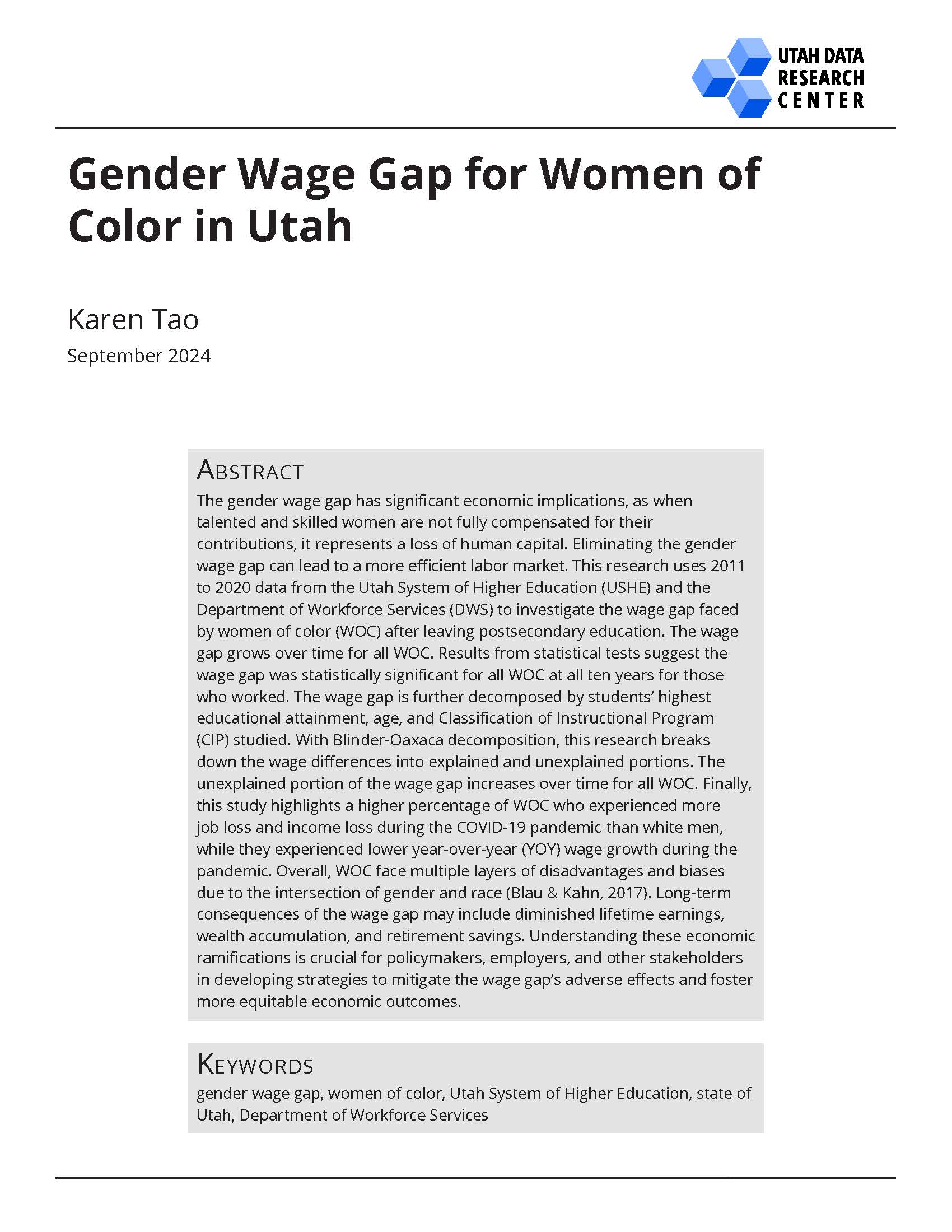Overview
The gender wage gap has significant economic implications. When talented and skilled women are not fully compensated for their contributions, it represents a loss to human capital. Long-term consequences of the wage gap may include diminished lifetime earnings, wealth accumulation, and retirement savings. Understanding these economic ramifications is crucial for policymakers, employers, and other stakeholders in developing strategies to mitigate the wage gap's adverse effects and fostering more equitable economic outcomes.
This research uses 2011 to 2020 data from the Utah System of Higher Education (USHE) and 2001 to 2020 data from the Department of Workforce Services (DWS) to investigate the wage gap faced by women of color (WOC) after leaving postsecondary education. The wage gap grows over time for all WOC, including those who worked and those who were strongly attached to the workforce (SATTW). Strongly attached to the workforce is an approximation of full-time employment based on an individual’s quarterly wages. Wages of WOC are compared to wages of white men with the same attachment to the workforce. Results from statistical tests suggest the wage gap was statistically significant for all WOC in all ten years analyzed for those who worked. The wage gap is further decomposed by students' highest educational attainment, age, and area of study. Using Blinder-Oaxaca decomposition, this research breaks down the wage differences into explained and unexplained portions. The unexplained portion of the wage gap increases over time for almost all groups of WOC. Finally, this study shows that a higher percentage of WOC experienced job loss and income loss during the COVID-19 pandemic than white men, while experiencing lower year-over-year (YOY) wage growth during the pandemic. Job loss is defined as having a zero-wage quarter after March 2020.
Summary of Findings
Finding 1: In general, the gender wage gap grows over time for women of color.


